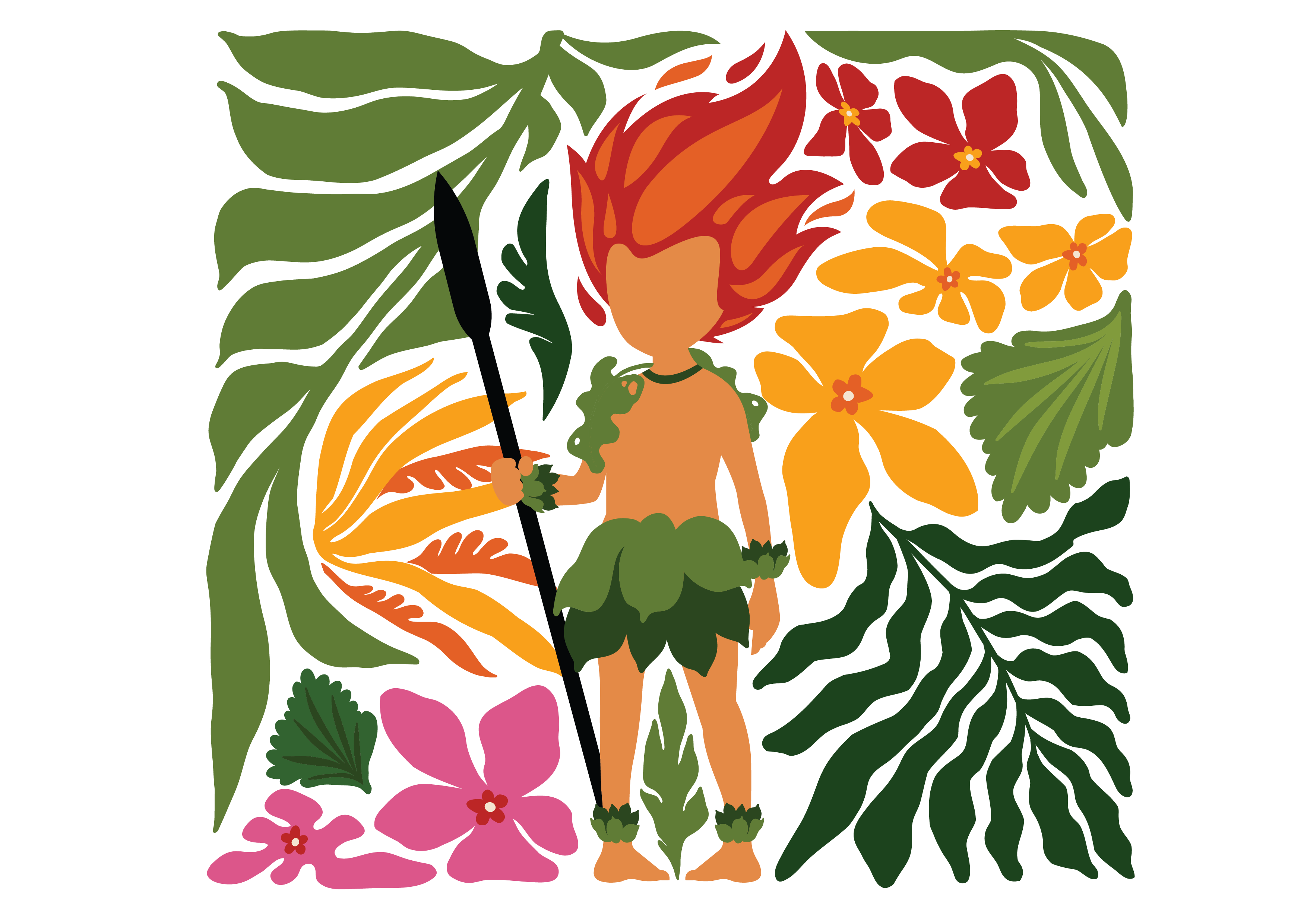At COP30, Curupira reinforces Brasil's identity and its bond with nature
Curupira, a figure from Brazilian folklore revered as the "guardian of forests and animals," has joined the visual identity of COP30 under the Brazilian presidency. In a letter to the international community, COP30 President Ambassador André Corrêa do Lago emphasizes forests as a "central topic" in the climate change debate

By Mayara Souto / COP30
With flaming hair, backward feet, and the body of a boy, Curupira is a beloved figure in Brazilian folklore, revered as the guardian of forests and animals. Chosen to be part of the visual identity of COP30 (United Nations Conference on Climate Change), this symbol reflects the Brazilian presidency's commitment to solidifying efforts that reduce greenhouse gas emissions, causing the Earth's warming.
Januária Silva, author of the book “O Curupira e outros seres fantásticos do folclore brasileiro”, explains that the story has a “very strong connection with nature”. “Our oral tradition is very rich in characters linked to nature. Curupira, above all, is a fantastic, magical being and defender of the forest. Protector of the forests and hunting. Now, he has his ways. He is mischievous; he plays tricks because, in reality, his main purpose is to save the woods, to preserve the forests. He does everything he can to ensure that nature isn't violated,” says the writer.
The first recorded reference to Curupira in Brazilian history dates back to 1560, in a letter written by Father José de Anchieta from São Vicente, on the São Paulo coast. The Jesuit arrived in Brasil to introduce Catholicism into Indigenous culture, writing poems and plays to aid his mission. In one of these texts, he described that Indigenous people greatly feared this folkloric figure and made offerings to avoid his attacks. The character's name derives from the Indigenous Tupi-Guarani language, where "curumim" means boy and "pira" means body.
Dr. Paulo Maués, author of “Histórias de Curupira” (Stories of Curupira) and a researcher from Belém, Pará—the host city for COP30 from November 10 to 21—notes that the legend remains deeply ingrained in the Amazônia region, actively shaping people’s relationship with the environment.
"Knowledge of Brazilian legends—particularly those from the Amazônia—is closely tied to environmental preservation issues," explains literature professor Dr. Maués. "Characters like Curupira, Boto, and Iara are true agents of ecological awareness and environmental education. We can observe this in the daily lives of the common people of the Amazônia, who have inherited an ethical code of conduct and a profound sense of belonging and respect for the environment from native peoples."
Educational role
The selection of Curupira as part of COP30’s visual identity also serves as a strategic way to engage new generations in understanding the crucial importance of environmental preservation.
"All manifestations of popular tradition can and should serve as a foundation for reflecting on climate issues that affect human beings," says Elaine Oliveira, a professor at the Universidade da Amazônia (UNAMA) and a public policy specialist for culture. "In times of climate catastrophe, introducing the symbolic figure of Curupira, especially to younger audiences, is a fun way to appreciate and share the poetic, oral, and creative stories of our people. It's a form of cultural resistance against the destruction of Brasil’s environmental and cultural heritage in the Amazônia."
The writer of the children's book about Curupira, Januária Silva, also believes in educating people about the environment through the legend of Brazilian folklore. "I think it's essential, including the education of future generations. It is up to them to stop this nonsense we are seeing concerning climate change. We even have to rescue our traditions to strengthen our identity. It's very important that the COP takes place in Brasil and I think Curupira was very well-chosen, he shows how important it is that we fight with him for nature too," she says.
Protecting forests
In a letter addressed to the international community, COP30 president André Corrêa do Lago asserts that forests will be a "central topic" in discussions at the world’s largest environmental debate.
"When we meet in the Brazilian Amazônia in November, we must pay close attention to the latest scientific research and reevaluate the significant contributions of forests and the people who protect and rely on them," writes COP30 president, Ambassador Corrêa do Lago. "Forests can help us buy time for climate action during this increasingly limited window of opportunity. If we reverse deforestation and restore what has been lost, we can remove massive amounts of greenhouse gases from the atmosphere while bringing ecosystems back to life."
COP30 President also integrates the knowledge of native peoples into the strategy for mitigating the effects of climate change. "Brazilian culture has inherited from the indigenous peoples native to Brasil the concept of “mutirão” (“Motirõ” in Tupi-Guarani), which refers to a community gathering together to work on a shared task, whether harvesting, building, or supporting each other. By sharing this invaluable ancestral wisdom and social technology, the COP 30 presidency invites the international community to join Brasil in a global “mutirão” (global collective effort) against climate change, a global effort of cooperation between peoples for the progress of humanity," he said.
COP in Brasil
COP30 marks the tenth anniversary of the Paris Agreement, which set national and international goals for limiting global warming to 1.5°C. At COP29, held in Baku, Azerbaijan, countries submitted and revised their Nationally Determined Contributions (NDCs)—the commitments of the 193 nations that are parties to the United Nations Framework Convention on Climate Change (UNFCCC).
As this year's host country, Brasil is committed to strengthening multilateralism and seeking consensus on global targets for reducing the emission of gases that cause global warming.
